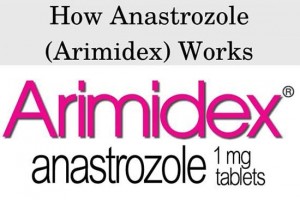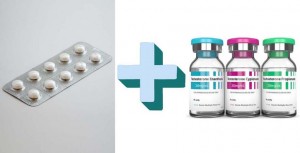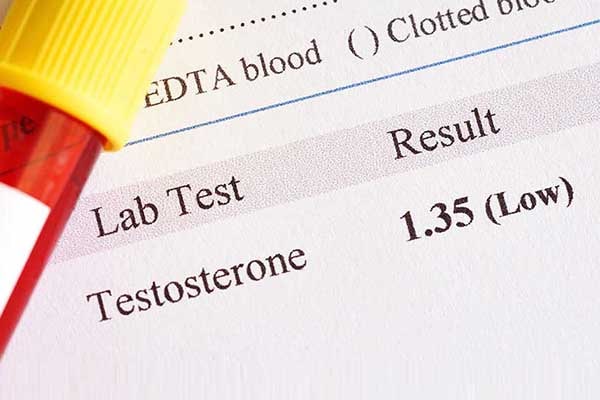In this article
Anastrozole, more popular by the brand name Arimidex, is a prescription drug that’s become popular amongst men with low testosterone (T) because of its ability to affect the ratio between testosterone and estrogen (E) in the human body.
This makes it suitable for certain subsets of male patients with mild hypogonadism who have functional testes but experience infertility and hormonal imbalance with high estrogen.
Yet, the medication’s primary indications are much different, and Anastrozole hasn’t been studied that well for off-label use such as in male hypogonadism.
Currently, the only FDA-approved therapy for the management of low T is testosterone replacement therapy (TRT). Therefore, Anastrozole is not a reliable alternative to the well-established medications for hypogonadism.
Anastrozole can also be used alongside TRT to minimize the natural increase in estrogen and reduce some side effects such as gynecomastia and reduced fertility.
Yet, this combination is even less studied, so it’s best to first consult with an experienced endocrinologist who can identify the exact cause of your problems and prescribe you appropriate therapy.
What is Anastrozole and how does it work?
Anastrozole is an aromatase inhibitor (AI) which means it blocks an enzyme called aromatase. This enzyme is the main factor responsible for converting testosterone to estrogen.
Aromatisation is a normal process that occurs in the ovaries as well as adipose tissues and it is the natural pathway of estrogen production in women. Arimidex blocks that conversion reversibly, so it is better tolerated than steroidal AIs which block it irreversibly.
The official indication for Anastrozole use is lowering estrogen levels in postmenopausal women diagnosed with hormone-sensitive tumors. If the tumor needs estrogen to grow (such as breast cancer), lowering estrogen can help treat the condition.
What is anastrozole used for in men?
In men, only small amounts of testosterone are converted to estrogen, and the process occurs mostly in the adipose tissues.
Arimidex can be used in males to block the conversion of testosterone to estrogen, which results in lower estrogen levels and reduced negative feedback to the hypophysis.
This leads to increased gonadotropin production by the pituitary, which ultimately stimulates higher testosterone production in the testes. Keep in mind that both the testes and the pituitary gland must have at least some of their functions preserved.
How long does it take for anastrozole to lower estrogen?
Since Anastrozole does stimulate testosterone synthesis in the testes, it may also restore fertility for men with low T. It takes Anastrozole only 24 hours to reduce estrogen levels in the body by at least 70%.
Yet, studies show that the increase in T levels occurs as soon as the 4th week after the start of the therapy. In one particular trial, patients who took the medication daily experienced an increase in T levels from 350 to 570 ng/dL on average.
Patients who took Arimidex twice per week also experienced an increase in T levels although the effect was much lower. Nevertheless, Anastrozole was still effective thanks to the long half-life which is about 50 hours (2 days). Besides, Anastrozole can stay in your system for 10 days on average (7-14 days).
What are the most common side effects of anastrozole?
Estrogen has important functions in both men and women. For example, E is important for maintaining bone mineral density and preventing osteoporosis in both genders. The hormone is also important for cardiovascular health, libido, and body composition.
Since aromatase inhibitors like Anastrozole block the production of estrogen completely, many of the side effects are related to that effect. For example, a reduced libido is common among men taking aromatase inhibitors despite the increase in testosterone.
The most common side effects of Anastrozole are generally mild and may include:
- Reduced sexual desire
- Headache
- Nausea and vomiting
- Joint and muscle pain
- Sleepiness
- Peripheral edema
These symptoms usually occur as soon as you start the therapy since the medication lowers estrogen levels by 70% in the first 24 hours. These symptoms will also improve quickly – within a couple of weeks of discontinuing anastrozole.
Some patients can also experience an increase in their liver enzyme levels but these changes tend to go away as soon as you discontinue the medication. Rarely, individuals may also be allergic to Anastrozole, which can lead to symptoms such as swelling, rashes, rapid heart rate, and chest pain.
Furthermore, some symptoms may occur several weeks or months after the start of the therapy. They include bone aches, mood changes, high blood pressure, and high cholesterol. These reactions may persist long after treatment cessation.
Studies suggest that, unlike women, men appear to be less likely to experience osteoporosis during long-term therapy with Anastrozole. That’s because the inhibition of aromatase in men tends to be about 77-88%, compared to 100% in women.
Nevertheless, the long-term use of Arimidex in men is yet to be thoroughly studied and scientists suspect that the medication may still eventually lead to osteoporosis in men after years of use.
In order to avoid similar side effects, you should consult with a doctor who will monitor your health and recommend dose reduction or cessation of Arimidex use if you’re at risk of serious adverse reactions.
When and how to take anastrozole with testosterone?
TRT can restore normal testosterone levels in hypogonadal men, but part of that T will inevitably get converted into estrogen by the aromatase enzyme.
Since TRT aims to achieve normal serum testosterone levels, normally your estrogen levels should also be in the range that’s typical for healthy males. This is why high estrogen is rather rare during testosterone therapy.
Yet, if your TRT dose is too high, this can also lead to excessively high estrogen levels. In such cases, the problem can be managed by simply adjusting the dosage of your testosterone medication.
Your doctor may consider adding anastrozole to TRT if your T levels are normal but the corresponding increase in estrogen is disproportionately high. This may be more common in men with obesity, as aromatase is found mainly in adipose tissue.
In such cases, anastrozole may be one of the medications which your doctor prescribes to address the issue. That’s because using anastrozole with TRT is a safe and effective option for managing high estrogen levels.
Currently, using them in combination has not been reported to lead to additional side effects. Another option to manage high estrogen levels during TRT is a class of drugs called selective estrogen receptor modulators (SERMs).
SERMs do not prevent the conversion of testosterone to estrogen but instead block some of the estrogen receptors in the human organism. These include receptors in breast tissue which makes them effective for the management of gynecomastia during TRT.
Yet, they do not inhibit the receptors in bone tissue which means they do not increase the risk of osteoporosis. Both SERMs and Arimidex can also help preserve fertility in men on TRT with low T and functional testes.
More on the topic: TRT Effects on Fertility and Sperm Count
Can anastrozole be used for low testosterone?
As research suggests, Anastrozole may help increase testosterone only in a specific subset of men with low T. This includes individuals with mild hypogonadism, and at least partially preserved pituitary and testicular function.
For example, one study with elderly men who had mild hypogonadism reported that Arimidex therapy doubled their testosterone levels.
Arimidex is also suitable for men with hypogonadism and obesity, as the excess adipose tissue increases the aromatization. Such patients often present with low T and high estrogen levels.
This means Anastrozole use is restricted to a specific subset of patients who have mild hypogonadism and wish to remain fertile. Those with severe hypogonadism and/or a complete lack of testicular function may not find the therapy effective.
The American Urological Association recommends that clinicians consider using medications other than TRT, such as aromatase inhibitors, in men who wish to remain fertile during their treatment.
Their recommendation is that for off-label use in men, Arimidex is dosed at 0.05 to 1 mg every three days. Yet, most studies also successfully and safely apply oral anastrozole in doses of 1 mg daily.
It’s important to note that many of the effects of TRT in men cannot be achieved with Anastrozole. For example, Arimidex therapy will not increase bone mineral density and reduce the risk of bone fractures.
Furthermore, Anastrozole may be ineffective in improving libido, as estrogens are also needed for normal sexual desire in men. Body fat loss will also be much less significant compared to TRT.






